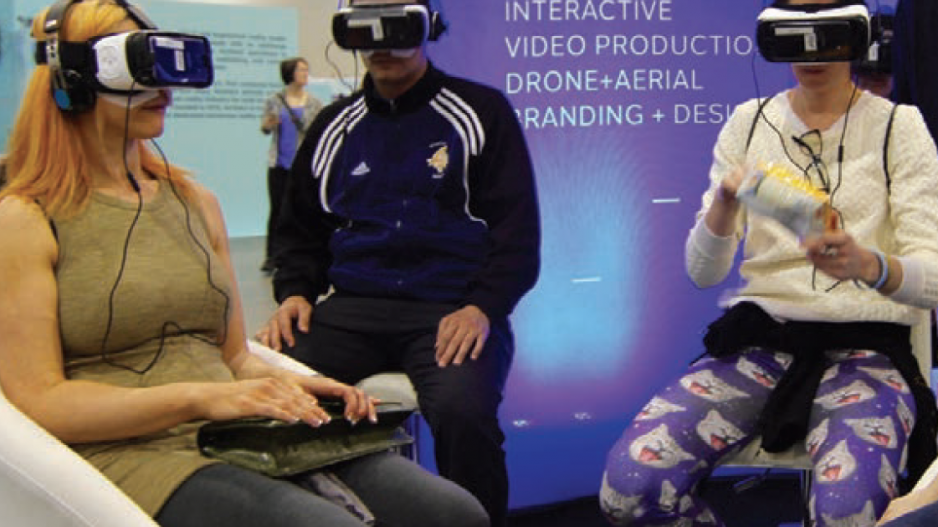If you had walked into the Vancouver Convention Centre earlier this month, you might have thought you had accidentally strayed into an acting class.
Throngs of people flapped imaginary wings, paddled invisible canoes and took aim at shapeless digital foes, all courtesy of this year’s Consumer Virtual Reality (CVR) conference.
Now in its second year, the May 6-to-8 conference brought together tech enthusiasts of all kinds to embrace all things virtual.
With interest steadily growing, the CVR conference is poised to become one of the venue’s fastest-growing events as Vancouver takes centre stage in the virtual and augmented reality space.
“Last year, we were expecting about 1,200 to 1,400 people, and we ended up overselling and getting roughly 3,000,” said Dan Burgar, director of business development at Vancouver-based virtual reality (VR) company Archiact and president of the VR/AR Association.
“There is an appetite for virtual reality and augmented reality, especially on the consumer side, and most people haven’t tried any headsets before so that was kind of an entry point.”
Archiact hosted the three-day event. This year, the conference drew more than 750 industry professionals and 5,000 consumers, substantially outperforming last year. The company projects the event will reach three times as many people in 2018.
An addition to this year’s regular CVR schedule was an industry day, which drew professionals from all over North America.
The rest of the weekend was devoted to two consumer-focused days.
“Last year, people just wanted to try on headsets,” Burgar said. “It could have been a real estate application or a gaming application. People just wanted to try it.
“This year, the Friday had business folks, and Saturday, Sunday were people interested in the technology, a lot of families and consumers. The latter half of the weekend, people really gravitated toward the games.”
Archiact’s multi-player VR game Smashbox had conference-goers lining up for more than half an hour for the chance to play, and a demonstration by architectural and real estate VR company LNG Studios drew crowds of creative and design fans.
Burgar said that beyond the excitement surrounding VR and its potential role in the future of technology, Vancouver continues to attract visitors to conferences and meetings because of its location and affordability for U.S. visitors.
“Vancouver is turning into a world-class city for events,” Burgar said, “and we’re seeing global events like TED putting Vancouver at the forefront. Even Siggraph in 2018 has decided to come back, arguably one of the biggest computer graphics and technology conferences in the world.”
The Siggraph (Special Interest Group on Computer Graphics and Interactive Techniques) conference is one of the world’s top tech conferences.
According to Tourism Vancouver, Siggraph 2014 brought nearly $39 million in direct spending to the local economy. The conference is slated to return to Vancouver August 12-16, 2018.
“With the Canadian dollar being where it’s at and how beautiful Vancouver is, it makes it an easy decision,” Burgar said. “And for tech it’s a favourable destination because it’s on the same time zone as California and a short flight for a lot of companies and leaders.”
According to the Vancouver Convention Centre website, more than 550 events are hosted at the centre every year, and visiting delegates who attend events spend roughly $1,400 per trip, with the average attendee staying more than four nights in the city.•




